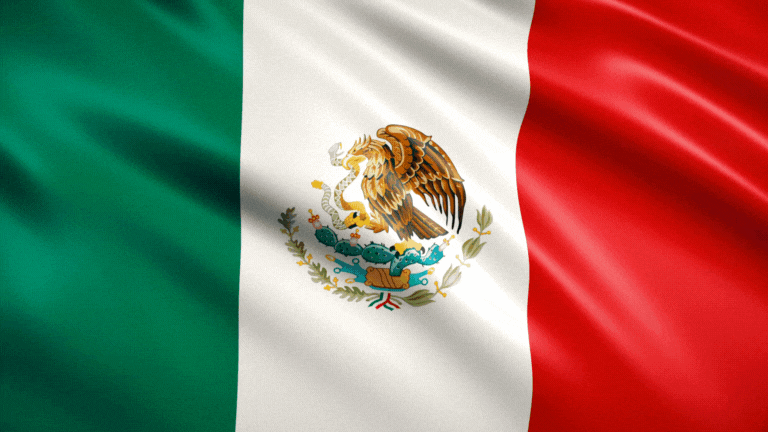Please be aware that this article may contain links to products and services we recommend. If you click on any of these links, we may earn a commission at no extra cost to you. We only endorse products and services that we believe will add value to our readers. Learn more here.
Mexico Flag: History & Symbolism
Hack The Quiz
7/4/20242 min read
This article explores the history and symbolism of the Mexico flag, highlighting Mexico’s location in North America and explaining how the flag’s design reflects the country’s rich cultural heritage, independence, and national pride.
Where is Mexico?
Mexico is located in North America, bordered by the United States to the north, Guatemala and Belize to the south, the Pacific Ocean to the west, and the Gulf of Mexico to the east. Known for its diverse landscapes ranging from deserts to tropical rainforests, Mexico is rich in history, being home to ancient civilizations like the Maya and Aztecs.
Mexico gained independence from Spain on September 16, 1810, a day now celebrated as Mexican Independence Day. The national flag, with its green, white, and red tricolors, was adopted in 1821, symbolizing the country’s struggle for independence and its identity as a unified nation.
The History of the Mexico Flag
The flag of Mexico was officially adopted on September 16, 1821, following the country’s successful fight for independence from Spain. The design was inspired by the banner carried by Miguel Hidalgo, a key figure in the Mexican War of Independence. Over the years, the flag has undergone minor modifications, but the core elements—its three vertical stripes and the coat of arms—remain the same.
The coat of arms in the center of the flag is rooted in an Aztec legend, representing the founding of Tenochtitlán (modern-day Mexico City). The Mexican flag is a powerful symbol of the country’s cultural heritage, resilience, and independence, uniting the nation under one banner.
Breaking Down the Mexico Flag’s Design
The Mexican flag features three vertical stripes of green, white, and red, with the national coat of arms placed in the center. Each element of the flag carries significant meaning tied to the country’s history, ideals, and identity.
Let’s break down the elements of the flag:
The Green Stripe
The green stripe represents hope and the fertility of the land. It is also said to symbolize the country’s independence movement and the ideals of freedom and liberty that inspired it.
The White Stripe
The white stripe stands for purity and unity. It represents the country’s commitment to maintaining peace and the importance of harmony among Mexico’s diverse population.
The Red Stripe
The red stripe honors the blood of those who fought for Mexico’s independence. It serves as a reminder of the sacrifices made to secure the country’s freedom from colonial rule.
The Coat of Arms
At the center of the flag is Mexico’s coat of arms, depicting an eagle perched on a cactus with a snake in its beak. This imagery is based on an ancient Aztec legend that guided the founding of Tenochtitlán, the capital of the Aztec Empire. The eagle and snake represent strength and resilience, while the cactus symbolizes the land of Mexico.
Final Thoughts
The flag of Mexico is a deeply symbolic representation of the country’s history, culture, and independence. The green, white, and red stripes reflect Mexico’s ideals of hope, unity, and sacrifice, while the central coat of arms ties the nation to its rich Aztec heritage.
Since its adoption in 1821, the flag has been a cherished symbol of Mexican pride, flown during national celebrations such as Independence Day and at international events. It serves as a reminder of Mexico’s journey to independence and its cultural legacy.
Expand your mind ...
Explore trivia that broadens your understanding and knowledge of the world.
WE ARE HERE FOR YOU
JOIN US and hack the quiz
info@hackthequiz.com
© 2024. All rights reserved.



